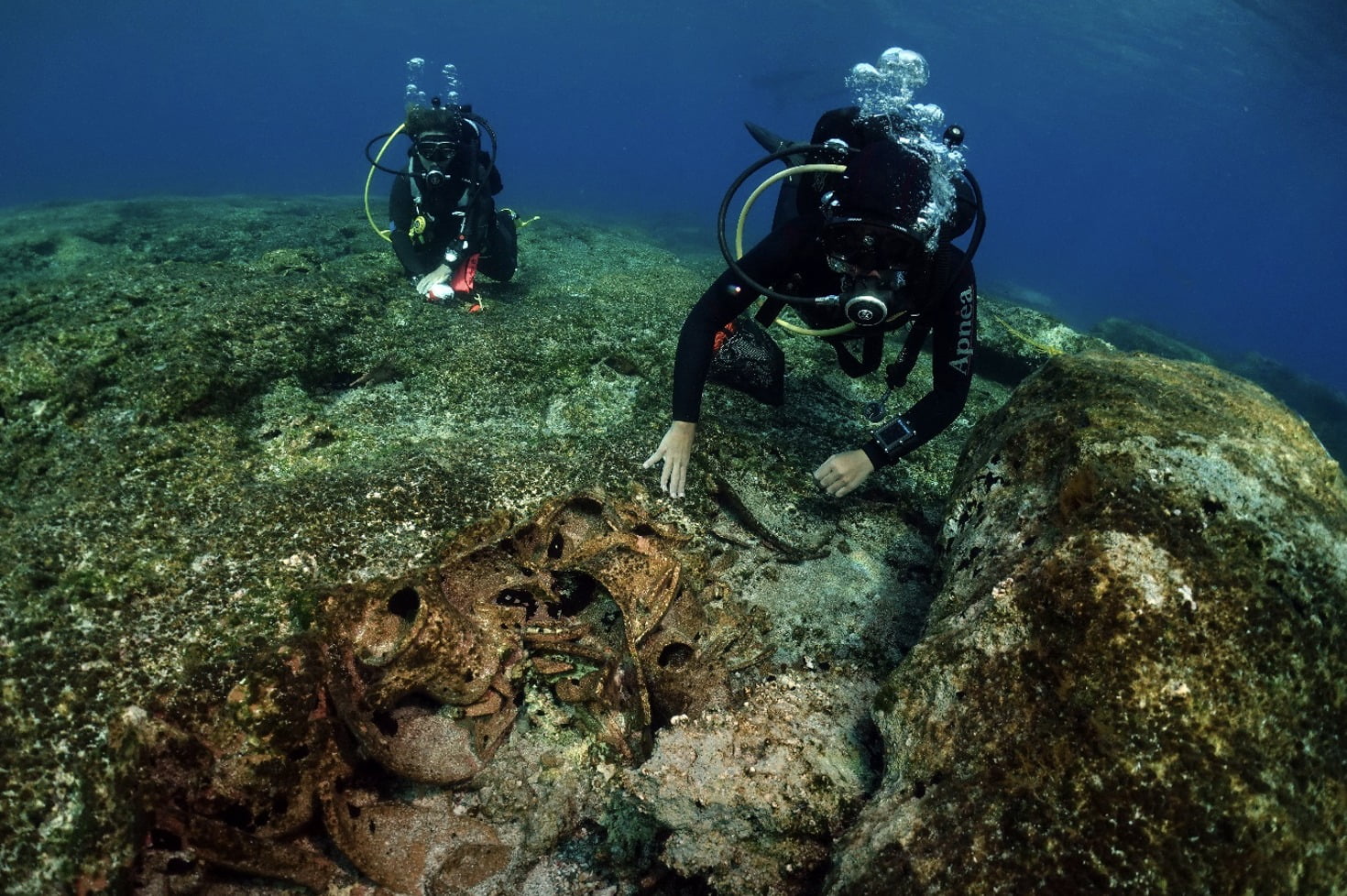Researchers surveying the seabed surrounding the island of Kasos discovered pottery that holds clues to trade in the Mediterranean

Archaeologists excavating shipwrecks off the Greek island of Kasos have unearthed a trove of pottery that sheds light on trade networks in the ancient world, according to a statement from the country’s Ministry of Culture and Sports.
Scholars from the ministry and the Institute of Historical Research of the National Hellenic Research Foundation uncovered the four shipwrecks last fall. As the Athens News Agency reports, the most significant discovery was a hoard of Roman pottery. The vessels found on board the second- or third-century A.D. wreck included amphorae filled with oil produced in Guadalquivir, Spain, and African amphorae from what is now Tunisia.
Speaking with ERT International’s Teofilakti Zavitsanu, expedition co-leader Xanthis Argyris says, “[T]his is the first time we [have found] amphorae from Spain and North Africa, which probably transported oil to Rhodes or the coasts of Asia Minor.”

Per Antonia Komarkowski of Greek City Times, the other three shipwrecks spanned millennia: One held amphorae dating back to the Hellenistic era, in the first century B.C., while another contained amphorae created during the classical era, around the fifth century B.C. The final shipwreck was far more recent, dating to modern times.

Used throughout the classical world, amphorae represent a wealth of information for contemporary scholars. As Mark Cartwright pointed out for Ancient History Encyclopedia in 2016, the two-handled jugs—whose name is derived from amphiphoreus, the Greek term for “carried on both sides”—hold clues to archaeological sites’ dates, trade links and inhabitants. Though these vessels are commonly associated with ancient Greece, civilizations ranging from the Romans to the Phoenicians also used the jars.

The newly unearthed amphorae may reveal more details about Kasos’ history. According to Ancient Origins’ Ashley Cowie, the island, which is located near Crete in the southern Aegean Sea, was an important ancient trade center where merchants exchanged goods from across the globe. The recent finds offer scholars additional information about what Kasos’ residents ate and where these foods originated.
Kasos, says the ministry in the statement, per a translation by Ancient Origins, was a “crossroads of civilizations.”
According to a separate statement, the expedition was a part of a three-year research project that aims to document the seabed near Kasos. As Tornos News reports, 23 experts from multiple fields have conducted around 100 dives totaling more than 200 hours. Work is expected to conclude this year.
“The next research project will include a state-of-the-art seabed detection machine without divers that will give us possible wreck points both on the surface and at the bottom,” Argyris tells ERT.
In 2019, the research team discovered another five shipwrecks dated to between the fourth century B.C. and the modern period. As Nick Kampouris noted for the Greek Reporter at the time, one of the wrecks dated to the Greek War of Independence in the 1820s, while another dated to the Byzantine era, between the eighth and tenth centuries A.D. Highlights of the finds included an iron cannon, tableware, Byzantine amphorae and five pyramid-shaped stone anchors, according to the second statement.
Per Ancient Origins, the Greek ministry deems the latest find “another trove of ancient treasures.”
Source: Smithsonian Magazine, Kasos Project, Ministry of Culture










